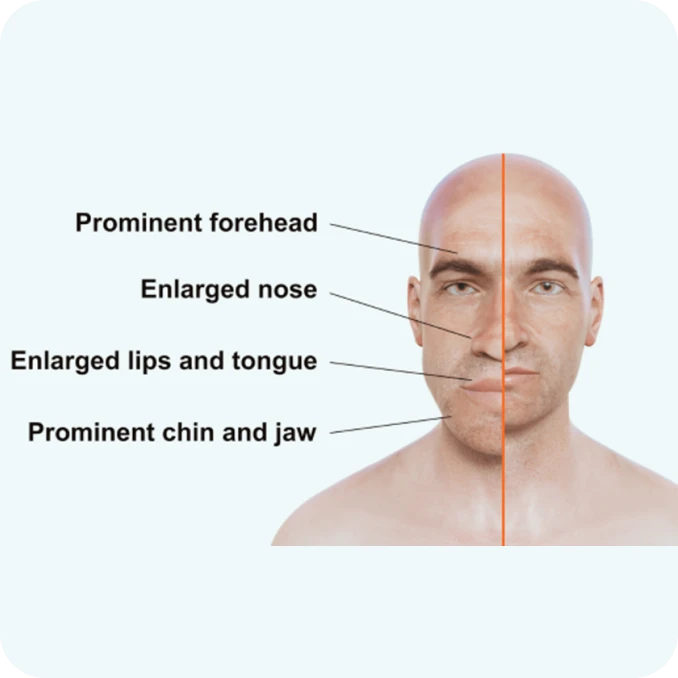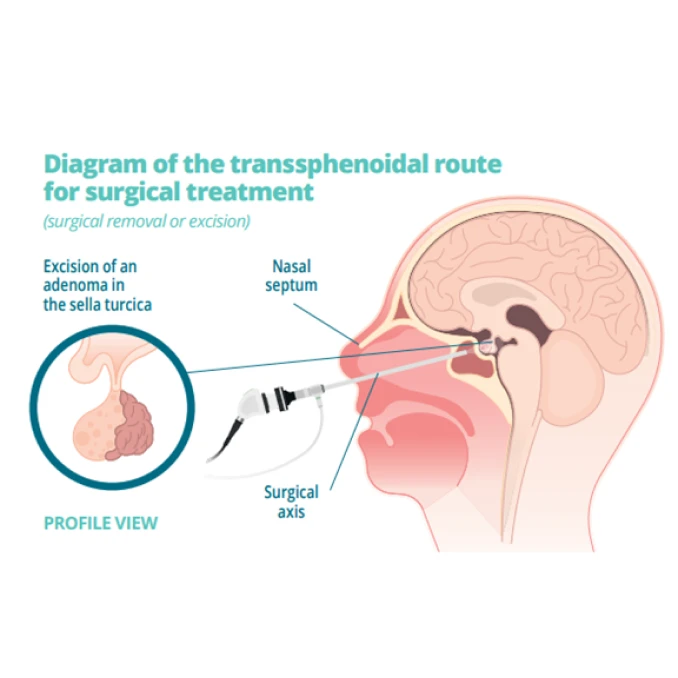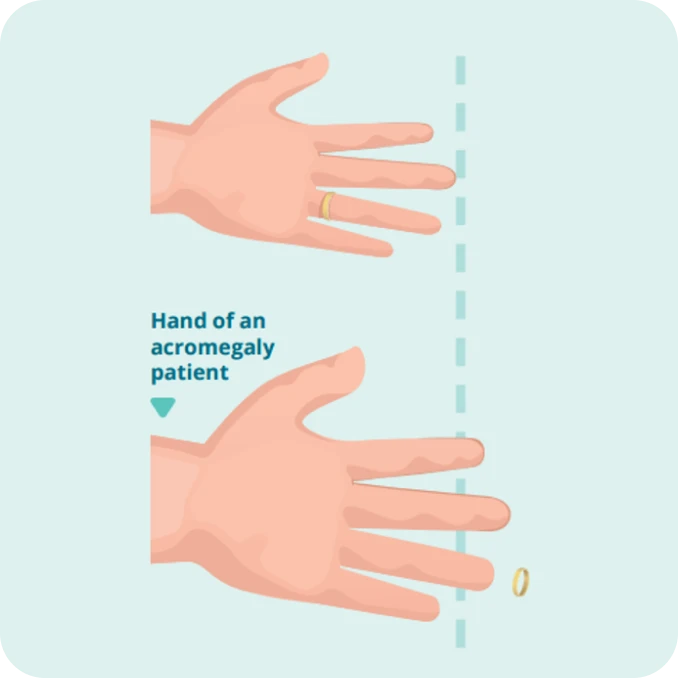UNDERSTANDING DISEASE
UnderstandingAcromegaly Disease
Acromegaly is a disorder that results from an overproduction of growth hormone, typically caused by a benign pituitary tumor. This leads to abnormal growth of bones and tissues, often resulting in enlarged hands, feet, and facial features.

Prevalence & Impact
Acromegaly is a rare disease. Often referred to as somatotroph adenoma or growth hormone excess, acromegaly is a rare, chronic metabolic disorder caused by the presence of too much growth hormone.4
Facts & figures:

≥1,000 patients in Malaysia5

130 new cases per year in Malaysia5

Affects men and women equally6

Becomes more common with increasing age6

Incidence 2-11 cases per million per year2

Prevalence 28-137 cases per million2

Causes and risk factors
Acromegaly is caused by abnormal production of growth hormone after normal growth of the skeleton and other organs is complete. In children, too much growth hormone causes a condition called gigantism rather than acromegaly.4
The cause of the increased hormone secretion is usually a benign tumour of the pituitary gland. The pituitary gland, which is located just below the brain, controls the production and release of several different hormones including growth hormone.4
There are no known risk factors for acromegaly other than a prior history of a pituitary tumour.4


Did you know?
The word acromegaly comes from the Greek words “acro,” meaning extremities, and “megaly,” meaning enlargement.
Signs & Symptoms
Symptoms often develop slowly and may be missed. Watch for:

Other Signs & Symptoms
The most common symptom of acromegaly is abnormal growth of the hands and feet.7 With swelling of the hands and feet being an early symptom of the condition, people with acromegaly might notice that their rings or shoes have become too tight. Over time, as the bones continue to grow, facial features begin to change.
With the brow and lower jaw becoming more prominent, the bone of the nose becoming larger, and the teeth developing spaces between them. Acromegaly can also lead to arthritis, carpal tunnel syndrome, and enlargement of the internal organs, including the heart.7

Additional symptoms may include:
- Joint aches
- Headaches
- Impaired vision
- Fatigue
- Weakness
- Thickening of the skin
- Oily skin
- Skin tags
- Skin odor
- Enlargement of the lips, nose, and tongue
- Deepening of the voice
- Sleep apnea
- Excessive sweating
- Abnormal menstrual cycles
- Breast discharge in women
- Erectile dysfunction in men
- Decreased libido
Why Early Diagnosis Matters
If left untreated, acromegaly can lead to serious complications like:
High Blood Pressure

18% – 77%
hypertension
Type 2 Diabetes

22.3% –76.8%
higher risk
Cholesterol

up to 61%
dyslipidemia
Obesity

>40%
higher risk
COMPLICATIONS
Prolonged overproduction of GH causes multiple complications
Cardiovascular
You may develop arterial hyper-tension and or cardiomyopathy (increased size and volume of the heart) with abnormalities in cardiac contractility, sometimes severe heart valve pathologies, or heart rhythm or conduction disorders. Certain cardiac signs may be a result of arterial hyper-tension. GH acts on the muscle of the heart (myocardium), causing hypertrophy (increase in size) of muscle fibres and collagen tissue, thus increasing the size of the heart. 2,15,16
Respiratory
You may suffer from sleep apnoea, and snoring. 2,15,16
Metabolic
GH increases blood glucose levels and exerts a lipolytic effect, which can lead to diabetes and disrupt the balance of fatty acids. 2,17,18
Gastrointestinal tumours
The incidence of polyps in the colon may be higher in patients with acromegaly. 2.15
Endocrine
Excess GH can cause disorders in thyroid function, the development of multinodular thyroid goitres and and hyperparathyroidism. The risk of cancer may be increased ac-cording to certain studies. 2.19
Skeletal and rheumatological
You may suffer from osteoporosis, vertebral fractures, and painful bone and joint pathologies, which can reduce joint mobility and progress to true osteoarthritis. 2.15
Neurological
Carpal tunnel syndrome, most of-ten nocturnal paraesthesia ("tin-gling") can occur in the hands as a result of damage to the median nerve (in the palm of the hand). 2,16

Acrogemaly’s Disease is Treatable
The goal is to bring hormone levels back to normal and relieve symptoms.
Treatment options may include:
